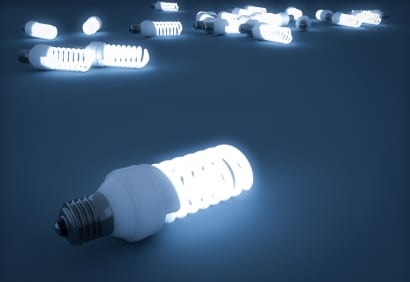
In a landmark decision for lighting, General Electric says it will no longer manufacture compact fluorescent light bulbs for consumer applications.
In light of new Energy Star standards and the falling price of LEDs, GE has decided to stop making CFLs by the end of the year.
GE is the first of the major lighting brands to abandon the technology — one that was never fully embraced by consumers.
“You could say it’s the bulb everyone loves to hate,” said Daraius Patell, general manager of North America for GE Lighting.
GE sold hundreds of millions of CFLs, which were widely adopted for their improved energy efficiency compared to traditional incandescent bulbs. Now, they’re not efficient enough.
New Energy Star standards that go into effect in 2017 will require omnidirectional light with a color rendering index (CRI) over 90 to have a minimum of 70 lumens per watt. Bulbs with a CRI less than 90 will have to have an efficacy of 80 lumens per watt.
“It puts the nail in the coffin,” Patell said of the standards. Utilities will stop offering rebates for CFLs if they do not meet Energy Star standards.
Additionally, California has implemented new energy standards for household and small directional lights. One requirement for small-diameter directional lamps is that they will have to have a minimum lifetime of 25,000 hours, a requirement only LEDs can meet.
Household bulbs will have to have a minimum lifetime of 10,000 hours, start instantly and have a high color rendering index. Some organizations, such as the National Electrical Manufacturers Association, took issue with the stringent requirements, saying it would raise the cost of LEDs. The California Energy Commission noted that all major manufacturers make bulbs that meet the new requirements.
The new standards, both in California and from the federal government, are surely a major setback for CFLs. But the tipping point may have already been reached.
The cost of household LEDs has plummeted, with major brands like GE selling bulbs that are cost-competitive with CFLs. In a 2015 Osram Sylvania survey, more than half of respondents said they purchased a CFL in the past year, but LEDs were close behind at 41 percent.
“The market is ready and our customers are ready,” said Patell.
Source: Greentech Media. Reproduced with permission.








